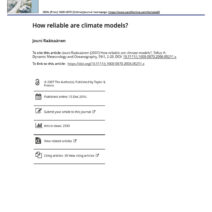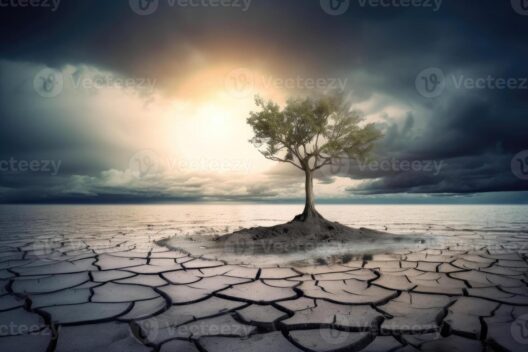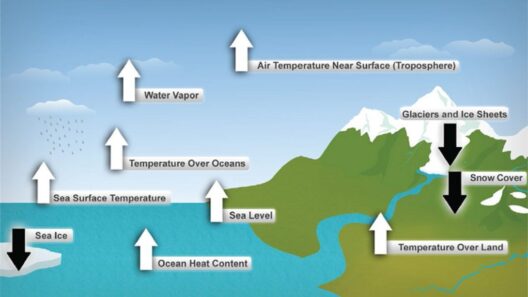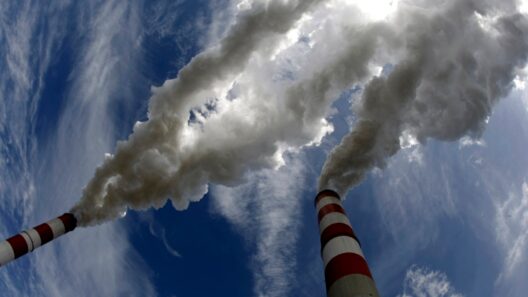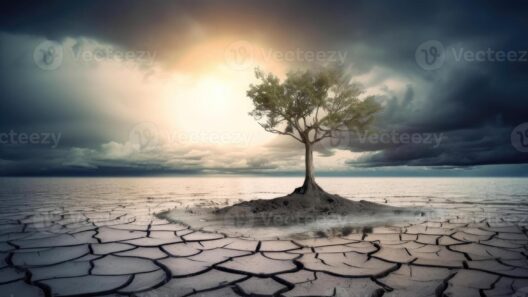The omnipresent specter of global warming looms over our existence, a relentless crescendo that echoes through the very fabric of our daily lives. Just as a slow-rising tide quietly encroaches upon the shore, climate change discreetly infiltrates our routines, reshaping them in unimaginable ways. We find ourselves at a critical juncture, where the future is not an abstract concept, but a palpable reality that shapes our present. While we often look to the distant horizon to ponder the implications of climate change, it is imperative to recognize that the effects are seeping into our lives as we speak.
Temperature fluctuations serve as an undeniable harbinger of this phenomenon. The once-reliable rhythm of the seasons has become erratic, akin to a metronome gone awry. Summers scorch with unprecedented heat, while winters offer scant respite. This tectonic shift alters not only our climate but also the very essence of our lifestyle. For instance, outdoor activities have become a gamble, with sweltering heat waves stifling joy and adventure. The soaring temperatures compel families to seek refuge indoors, veiling once-vibrant parks and recreational areas in idle silence.
The gastronomic world has also been caught in the grip of this warming trend. Agriculture, a cornerstone of global sustenance, now dances precariously on the precipice of uncertainty. Crops that once flourished in specific climatic conditions are succumbing to heat stress and water scarcity. As droughts escalate and erratic rainfall patterns emerge, we begin to witness the intricate interdependencies of our food systems unraveling. Prices rise, choices dwindle, and the specter of food insecurity casts a long shadow over communities, particularly those already teetering on the brink of vulnerability.
Moreover, the health ramifications of global warming cannot be brushed aside. The microcosm of our well-being is under siege as vector-borne diseases become more prevalent in warmer regions. Mosquitoes, emboldened by increasing temperatures, now flourish in areas once deemed inhospitable. Diseases such as dengue and Zika virus proliferate, and our health infrastructure races to catch up with the expanding threats. The familiar dance of cold and flu seasons has also shifted, as warmer winters foster longer growing seasons for pathogens, much to the chagrin of public health officials.
Our near-constant interaction with technology amplifies these effects. The digital age, while enhancing connectivity, has inadvertently contributed to our carbon footprint. Excessive energy consumption from data centers and electronic devices feeds the insatiable appetite for information and entertainment, all while exacerbating global warming. Each click reverberates through the atmosphere, demanding a critical reevaluation of our digital habits. Are we willing to continue down the path of rampant consumption, or can we pivot to a more sustainable coexistence?
Transportation, an indispensable facet of modern life, offers yet another layer of complexity. The proclivity for fossil fuels in our vehicular fleets has left an indelible mark on air quality and climate stability. The transition to electric vehicles stands at the crossroads of innovation and inertia. Alternatives exist, yet the pace of adoption remains sluggish as entrenched interests resist the winds of change. We are left to ponder: can we hasten this transition without sacrificing accessibility and economic stability?
Water, the elixir of life, grows scarce in many regions, exacerbated by both rising temperatures and extravagant consumption patterns. The aquifers that sustain us are depleting at alarming rates, beckoning a clarion call for conservation. To acknowledge the urgency of this situation is to recognize the remarkable fragility of our ecosystems—the intricate web that responds to our callousness with senseless droughts and debilitating floods. The struggle for clean water now becomes a salient reminder to cherish that which we once took for granted.
It is essential to highlight that the environmental ramifications of global warming extend beyond mere discomfort or inconvenience; they are a veritable tapestry woven with threads of social equity and justice. Vulnerable communities—often marginalized by political and economic systems—bear the brunt of climatic shifts. From urban centers plagued by heat islands to rural areas facing desolate crop yields, communities already grappling with poverty are pushed further into peril. To combat this crisis, we must advocate for inclusive policies that consider the voices of those most affected, ensuring that solutions are equitable and just.
The phenomenon of global warming acts as a magnifying glass that reveals our interconnectedness. It beckons us to embark on collective action rather than individualized responses. The road forward demands innovative thinking—integrating renewable energy sources, embracing circular economies, and fostering sustainable consumption patterns. As consumers, we wield significant influence through our choices, whether supporting local farmers’ markets or advocating for legislation that prioritizes the environment.
Education is the beacon that can illuminate the path toward a sustainable future. Spreading awareness and fostering a culture of environmental stewardship empowers future generations to devise solutions to the climate crisis. The youth, equipped with knowledge, can champion the cause, breathing life into movements that prioritize our planet. Their conviction serves as a reminder that climate action transcends individual pursuits; it is a shared responsibility.
As we draw toward the conclusion, it becomes starkly clear: the future is now. The effects of global warming infiltrate our daily lives, begging us to become keystones in the architecture of change. The challenge lies not solely in adapting to the changes wrought by climate change, but in taking decisive action to sow the seeds of a sustainable future. We stand at a precipice; will we engage with the realities at our doorstep or retreat into complacency? The choice is as urgent as it is vital—an opportunity to forge a new trajectory for ourselves and the generations to come.

